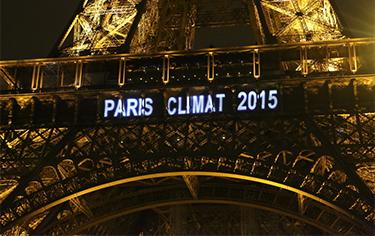What is the Paris Agreement?

The Paris Agreement was a landmark document that was produced at the 21st session of the Conference of Parties (COP21) to the United Nations Framework Convention on Climate Change (UNFCCC) in Paris, France, in December 2015. The Agreement entered into force on 4 November 2016.
The UN describes the Paris Agreement as charting “a new course” in global climate action because for the first time it brought all nations “into a common cause to undertake ambitious efforts to combat climate change and adapt to its effects, with enhanced support to assist developing countries to do so”.
How many countries have joined the Agreement?
As of 11 December 2020, 193 countries and the European Union have signed the Agreement, and 189 have become Parties by depositing with the United Nations their “instruments of ratification, acceptance, approval or accession”. The states that have signed but not ratified have expressed their intention to comply but this in itself is not binding.
The United States ratified the Agreement on 3 September 2016, but completed its withdrawal on 4 November 2020. However, President-elect Biden has expressed his intention to rejoin the Agreement after his inauguration in January 2021.
The Parties to the Agreement usually meet formally every year at sessions of the Conference of the Parties to the UNFCCC. The next meeting is COP26 in Glasgow, Scotland, scheduled for November 2021.
Articles of the Paris Agreement
The Agreement consists of 29 Articles covering a wide range of actions for tackling climate change. Articles from across some of the most important themes are described below.
Temperature goals
Article 2 commits Parties to: “Holding the increase in the global average temperature to well below 2°C above pre-industrial levels and pursuing efforts to limit the temperature increase to 1.5°C above pre-industrial levels, recognizing that this would significantly reduce the risks and impacts of climate change.”
Parties’ pledges
Article 3 states that Parties should “undertake and communicate ambitious efforts” to respond to climate change as “nationally determined contributions”. It also noted that “the efforts of all Parties will represent a progression over time”.
Article 4 indicates that, in order to achieve the goals laid out in Article 2, Parties should “aim to reach global peaking of greenhouse gas emissions as soon as possible, recognizing that peaking will take longer for developing country Parties, and to undertake rapid reductions thereafter in accordance with best available science, so as to achieve a balance between anthropogenic emissions by sources and removals by sinks of greenhouse gases in the second half of this century, on the basis of equity, and in the context of sustainable development and efforts to eradicate poverty.”
Article 6 establishes a mechanism through which Parties can “engage on a voluntary basis in cooperative approaches that involve the use of internationally transferred mitigation outcomes towards nationally determined contributions”. It also states that Parties “shall apply robust accounting to ensure, inter alia, the avoidance of double counting”.
Adaptation and sustainable development
Article 7 establishes “the global goal on adaptation of enhancing adaptive capacity, strengthening resilience and reducing vulnerability to climate change, with a view to contributing to sustainable development and ensuring an adequate adaptation response in the context of the temperature goal referred to in Article 2”.
Article 8 requires that “Parties recognize the importance of averting, minimizing and addressing loss and damage associated with the adverse effects of climate change, including extreme weather events and slow onset events, and the role of sustainable development in reducing the risk of loss and damage”.
Climate finance
Article 9 states: “Developed country Parties shall provide financial resources to assist developing country Parties with respect to both mitigation and adaptation in continuation of their existing obligations under the Convention.” It also notes that “developed country Parties should continue to take the lead in mobilizing climate finance from a wide variety of sources, instruments and channels”, and that this “mobilization of climate finance should represent a progression beyond previous efforts”. The Cancún Agreements, which emerged from COP16 in Cancún, Mexico, in December 2010, commit developed country Parties to the UNFCCC to “a goal of mobilizing jointly USD 100 billion per year by 2020 to address the needs of developing countries”.
Education and awareness
Article 12 states: “Parties shall cooperate in taking measures, as appropriate, to enhance climate change education, training, public awareness, public participation and public access to information, recognizing the importance of these steps with respect to enhancing actions under this Agreement.”

